Idea by
Jevon Chandra, Kei Franklin, Jungsuh Sue Lim
(N.A.)
Call for ideas 2021
What Comes After
What Comes After
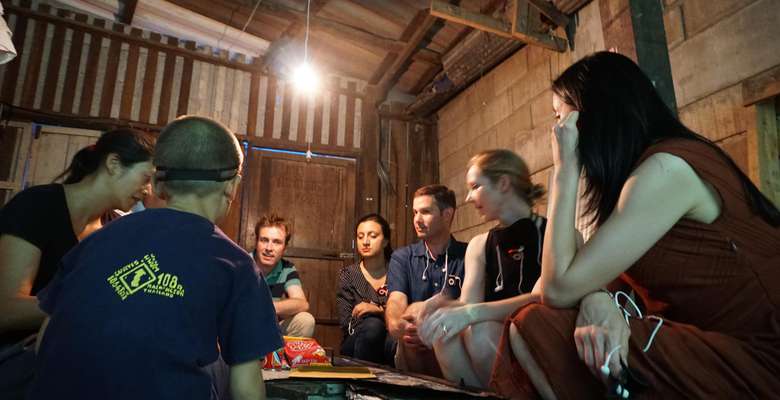
- Site-specific cases
“What Comes After” calls for new architecture, one fitting this era of crises. How might we, in our construction of homes, anticipate its inevitable dismantling? Post-flood, what new spaces can sustain us?
The crises that await us will exacerbate injustice. Some will hear the flood warnings and will have the means to evacuate to nearby countries. Others will use raffia string to tie themselves together, hugging fences and walls to maintain footing. A school of fish may wash up into a lady’s house; she may decide to care for them.
As we learned after the work’s debut, most disaster scientists – dedicated to modeling, studying, and ideating about floods – have never actually experienced one. The systems and interventions they map may lack the input of lived experience, myths, and ethno-fictions.
“What Comes After” is immersive and immediate, demanding action. How will participants work together to create a blueprint for rebuilding? Post-rupture, what new possibilities arise?

Start of work. Raffia string visible, based on accounts of citizens using it for survival, tying to each other, to not be washed away by water torrents.
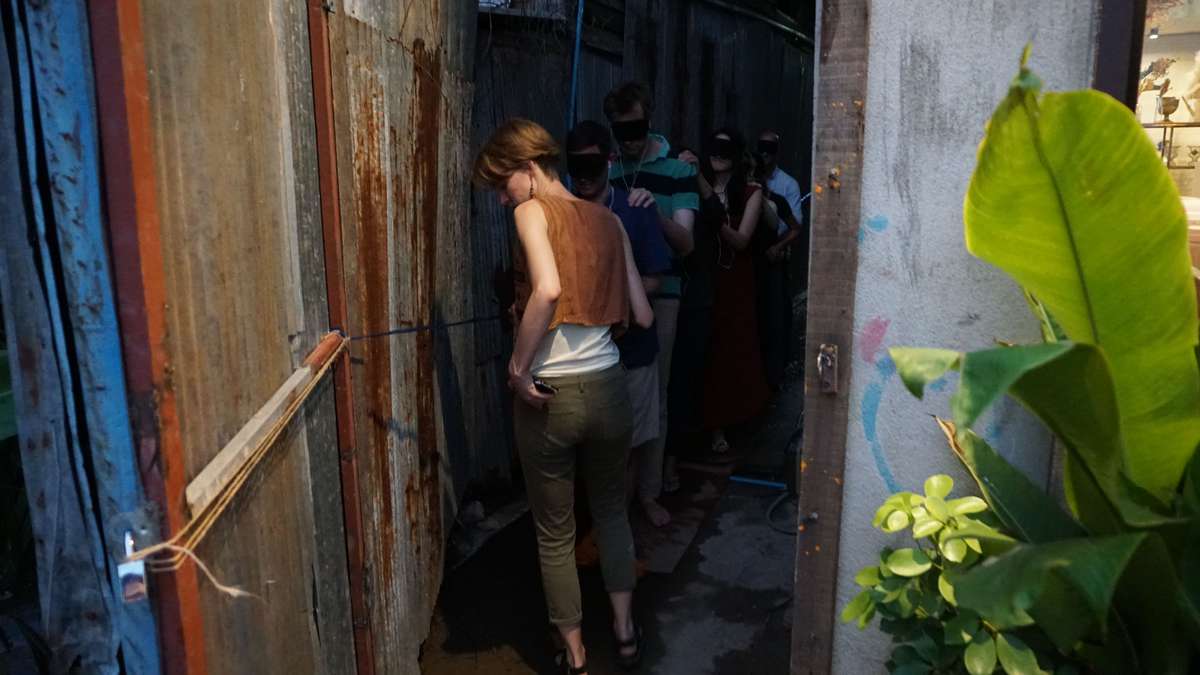
Participants are blindfolded and listen to an audio track for immersion, walking together as guided by facilitator and raffia string.

The experience enters a wider space after a narrow one, mirroring wayfinding across, alleyways, backdoors, fields as normal routes are cut.
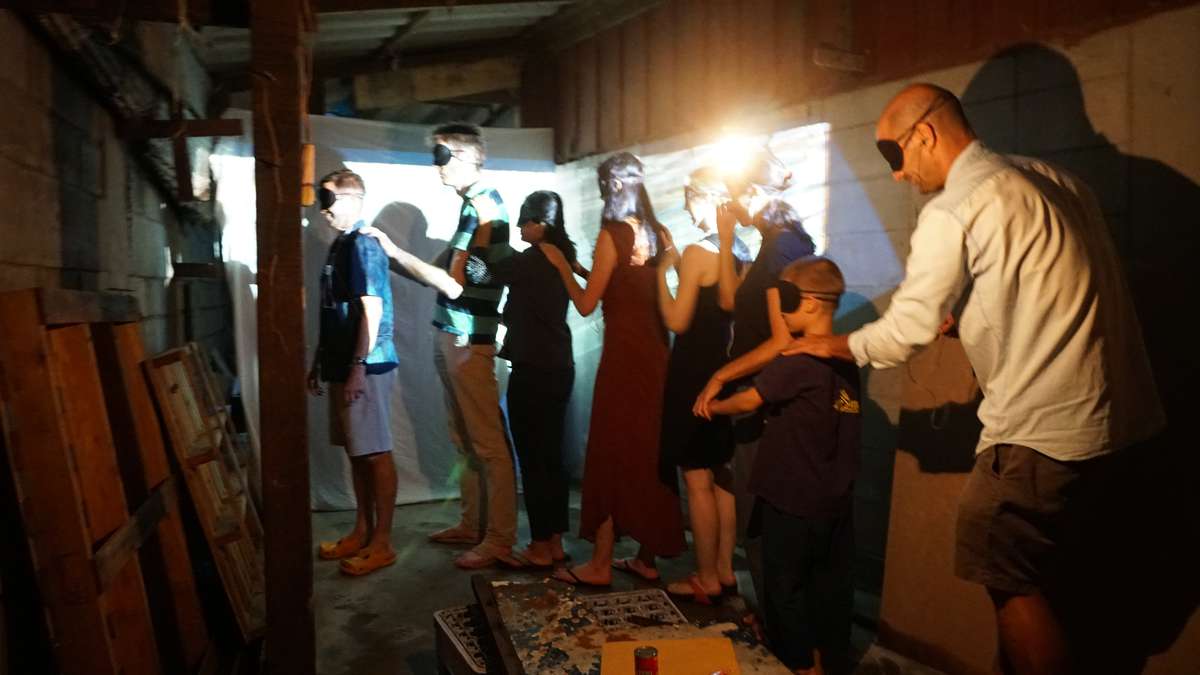
Participants enter a temporary hut. Here, they take off their blindfolds and begin drawing blueprints for rebuilding a community post-flood.
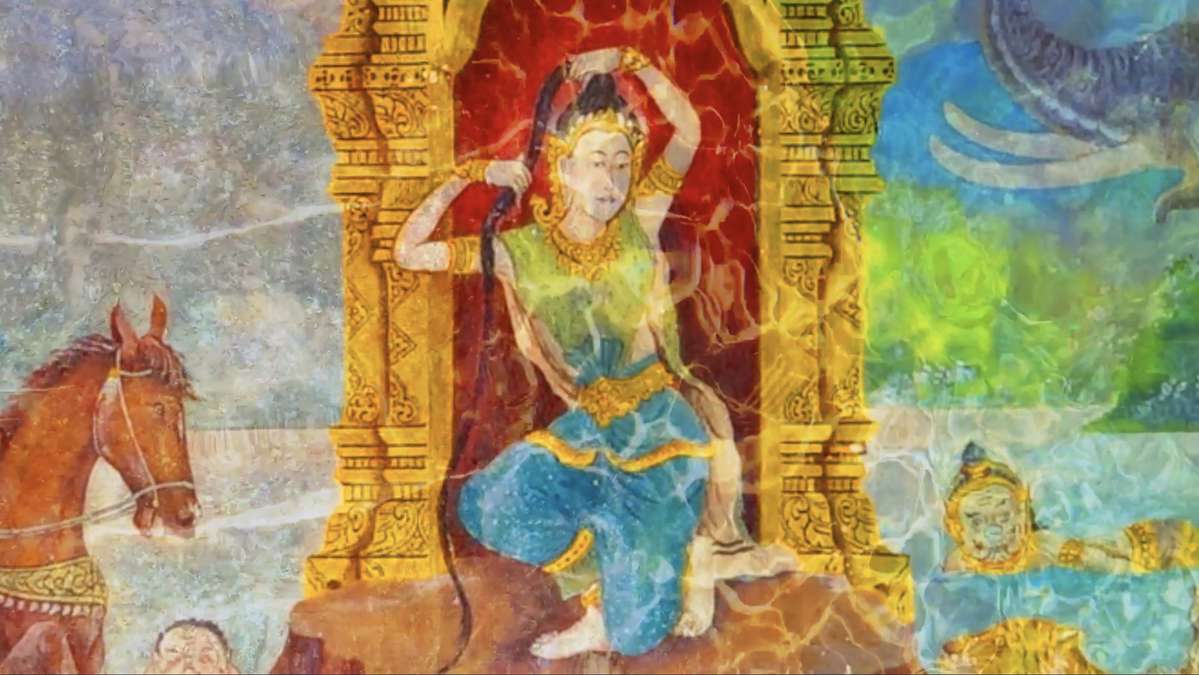
A still from projection used. It depicts Thorani, a female water goddess who used her hair to create floods to wash away demons who threatened Bodhisattva's meditation – so the story goes.
What Comes After
What Comes After

- Site-specific cases
“What Comes After” calls for new architecture, one fitting this era of crises. How might we, in our construction of homes, anticipate its inevitable dismantling? Post-flood, what new spaces can sustain us?
The crises that await us will exacerbate injustice. Some will hear the flood warnings and will have the means to evacuate to nearby countries. Others will use raffia string to tie themselves together, hugging fences and walls to maintain footing. A school of fish may wash up into a lady’s house; she may decide to care for them.
As we learned after the work’s debut, most disaster scientists – dedicated to modeling, studying, and ideating about floods – have never actually experienced one. The systems and interventions they map may lack the input of lived experience, myths, and ethno-fictions.
“What Comes After” is immersive and immediate, demanding action. How will participants work together to create a blueprint for rebuilding? Post-rupture, what new possibilities arise?
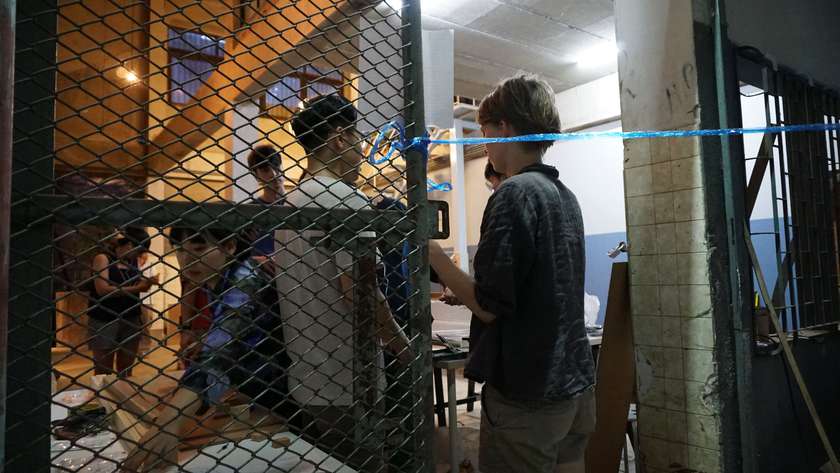
Start of work. Raffia string visible, based on accounts of citizens using it for survival, tying to each other, to not be washed away by water torrents.

Participants are blindfolded and listen to an audio track for immersion, walking together as guided by facilitator and raffia string.
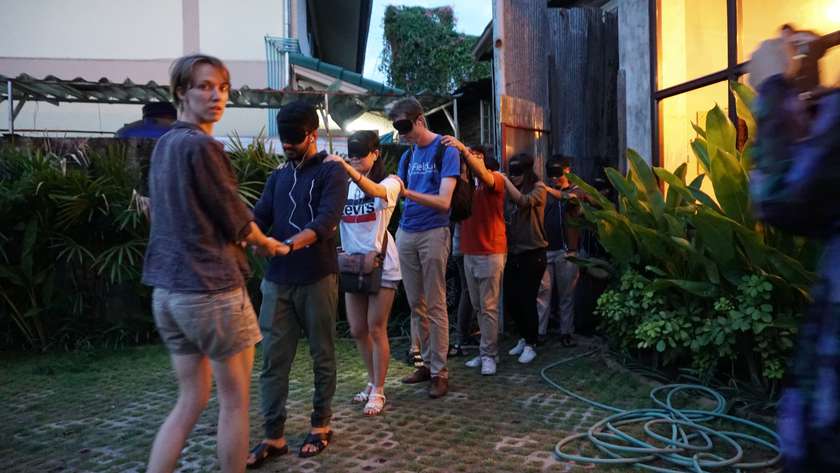
The experience enters a wider space after a narrow one, mirroring wayfinding across, alleyways, backdoors, fields as normal routes are cut.
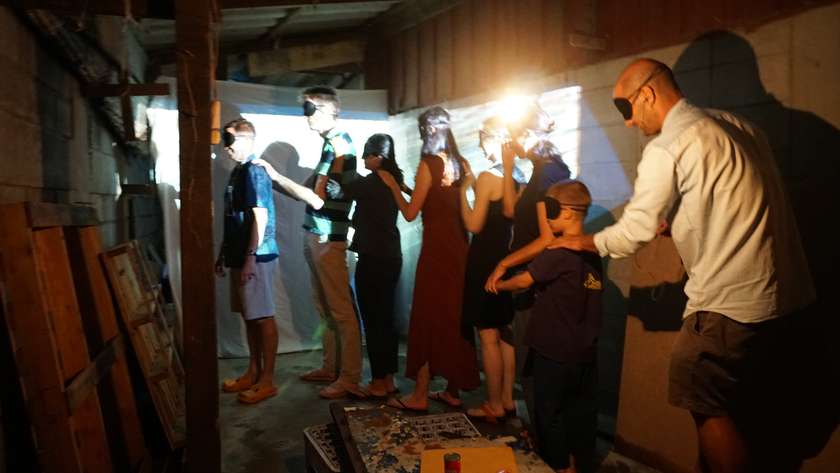
Participants enter a temporary hut. Here, they take off their blindfolds and begin drawing blueprints for rebuilding a community post-flood.

A still from projection used. It depicts Thorani, a female water goddess who used her hair to create floods to wash away demons who threatened Bodhisattva's meditation – so the story goes.